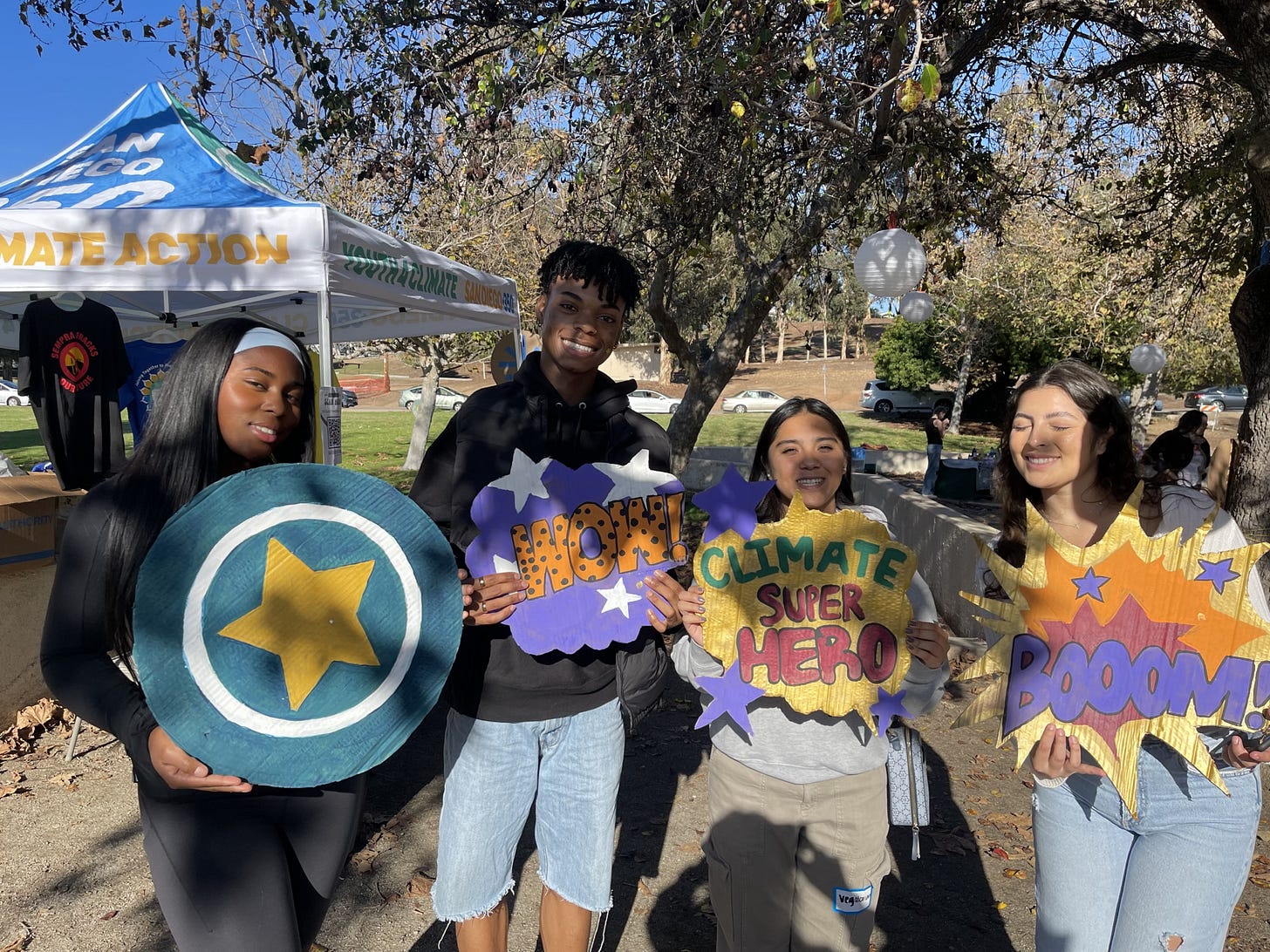Discovering the Regional Decarbonization Framework
A Jumping-Off Place Partnership with SanDiego350
The Jumping-Off Place is partnering with SanDiego350 to bring you important climate news and actions. We’ll be posting articles and blogs by SD350 folks on a regular basis. This week, we’re sharing an article by Monserrat Mejia on how to understand the Regional Decarbonization Framework.
By Monserrat Mejia
As a Mexican-American resident in San Diego with little prior knowledge about climate change, the concerns about how environmental issues affect low-income neighborhoods like mine felt overwhelming. However, my journey to understanding the Regional Decarbonization Framework (RDF) has been enlightening and empowering. Many low-income communities in San Diego, including Barrio Logan, are historically significant and culturally rich areas. Unfortunately, they also face significant environmental challenges. The community is situated near industrial zones and busy highways, contributing to higher levels of air pollution. Residents, including myself, are concerned about the health impacts of this pollution, particularly respiratory issues and other long-term health risks.
The turning point in my understanding of climate change and its solutions came when I learned about San Diego’s Regional Decarbonization Framework (RDF). This initiative will guide the region towards a sustainable and equitable low-carbon future. The RDF is comprehensive, focusing on various sectors critical to reducing greenhouse gas emissions to net zero by 2045, and promoting environmental justice. The RDF’s “Let’s Get There” playbook outlines five key strategies to achieve decarbonization. Each strategy has implications for improving air quality and fostering environmental equity in neighborhoods like Barrio Logan, and in each area the playbook offers different strategies presented for individuals, businesses, and government.
Upgrading buildings to be more energy-efficient and relying on clean energy sources can significantly reduce emissions. For Barrio Logan, this means healthier living environments and lower utility costs, which is crucial for low-income families. Transitioning to renewable energy sources is at the heart of decarbonization. Community solar projects and rooftop solar installations can make clean energy accessible to low-income households, reducing reliance on polluting energy sources.
Promoting local, sustainable food systems and reducing waste through a circular economy approach can decrease emissions from food production, disposal, and composting. This strategy also encourages urban agriculture, which can provide fresh produce in food deserts and reduce the environmental footprint of our food. Implementing green spaces and enhancing urban forestry can absorb carbon dioxide and improve air quality. In Barrio Logan, increased green spaces help with decarbonization and offer residents areas for recreation and community activities.
Investing in public transportation and creating bike-friendly infrastructure can reduce vehicle transient and carbonization. This is especially beneficial in low-income areas where residents may rely heavily on public transit and can reduce their exposure to vehicular pollution.
One critical aspect of the RDF is its focus on equity and environmental justice. This means ensuring that the benefits of decarbonization reach all communities, especially those historically burdened by pollution. For Barrio Logan, this includes policies prioritizing improving air quality and providing resources for clean energy and energy efficiency upgrades.
Learning about the RDF has not only educated me on the processes of decarbonization but also highlighted how these efforts can directly benefit my community. Understanding the strategies and their implementation has given me hope and motivation to advocate for cleaner air and a healthier environment in Barrio Logan. As a novice in climate change, this journey has transformed my perspective. The Regional Decarbonization Framework has shown me that achieving a low-carbon future is not only possible, but can also be equitable. We can work towards a healthier, more sustainable San Diego for all by involving and prioritizing low-income communities in these efforts, and advocating together to make sure this plan becomes a reality.
Monserrat Mejia is a student at University of San Diego and a Climate Corps Fellow with SanDiego350.




